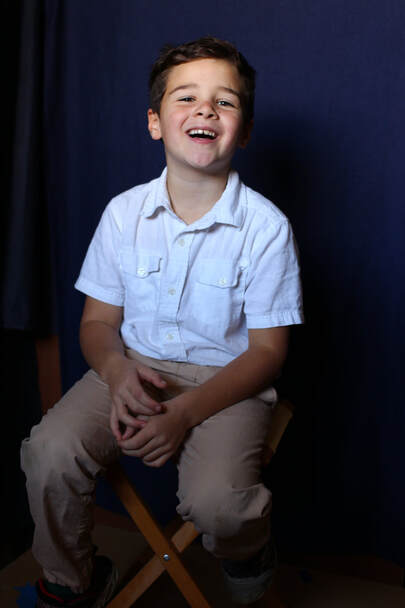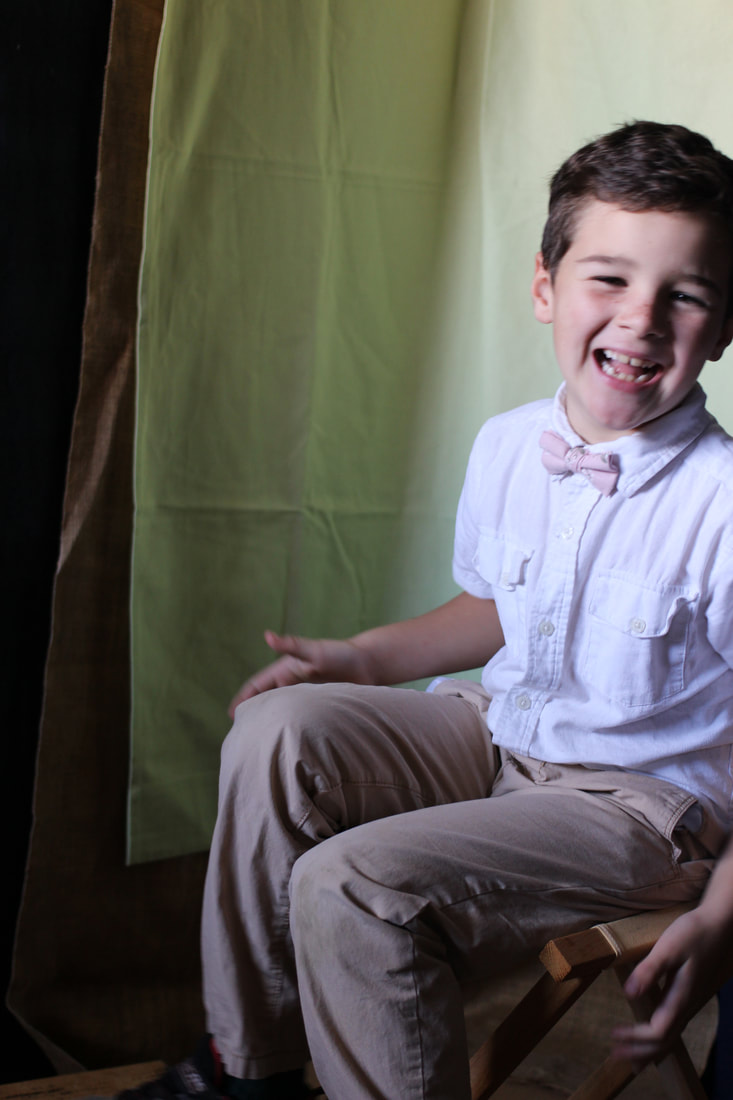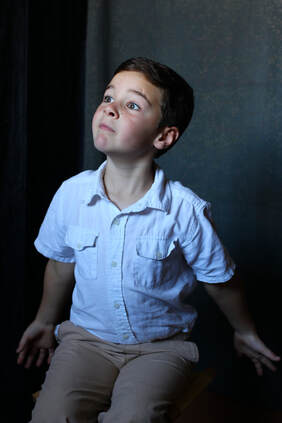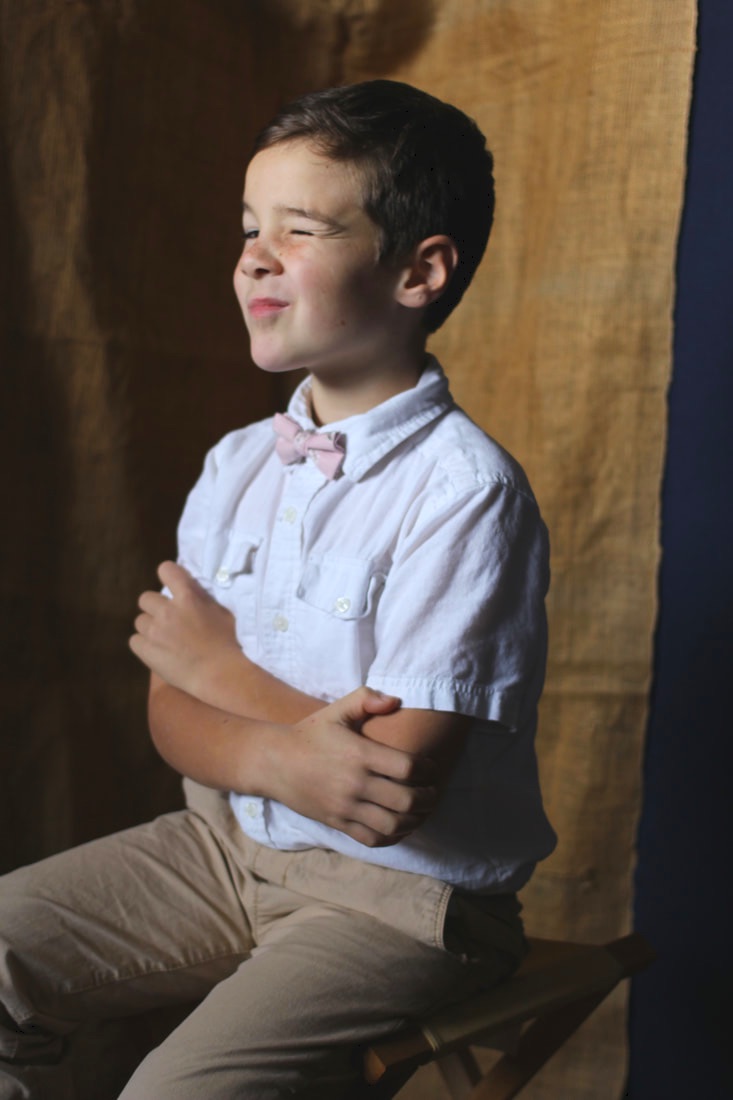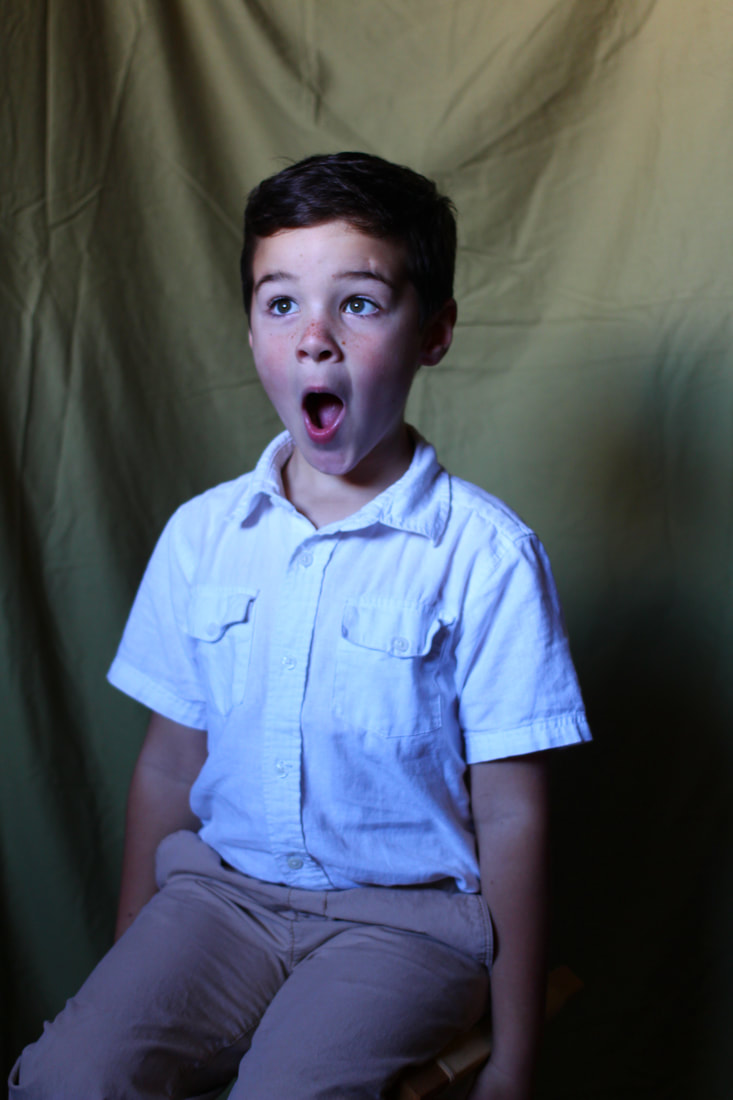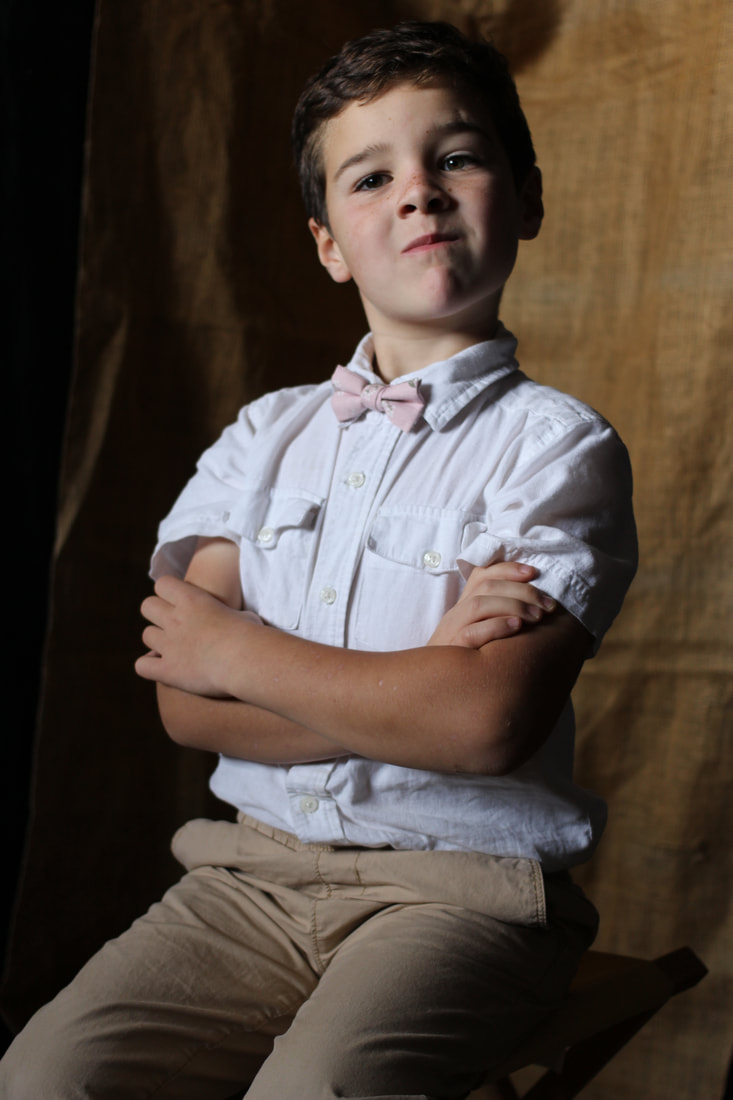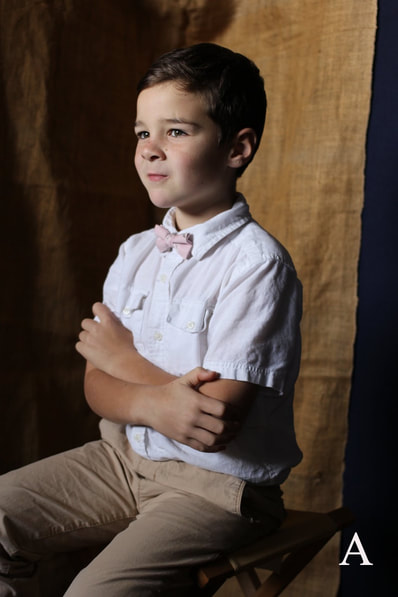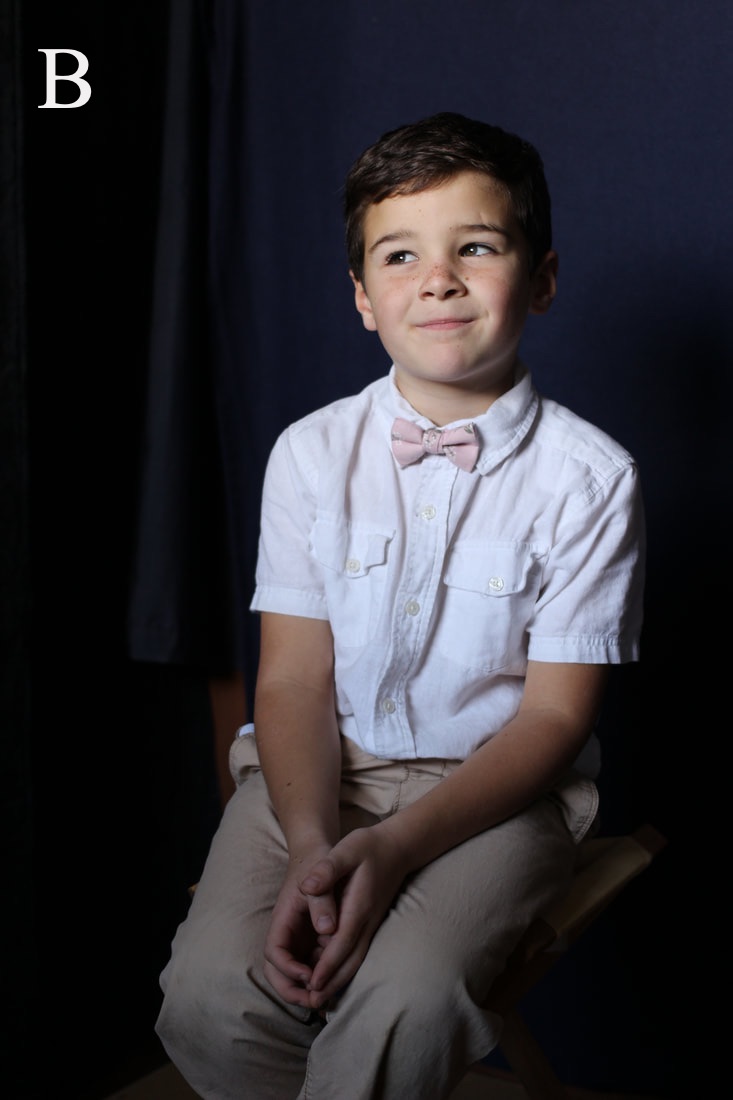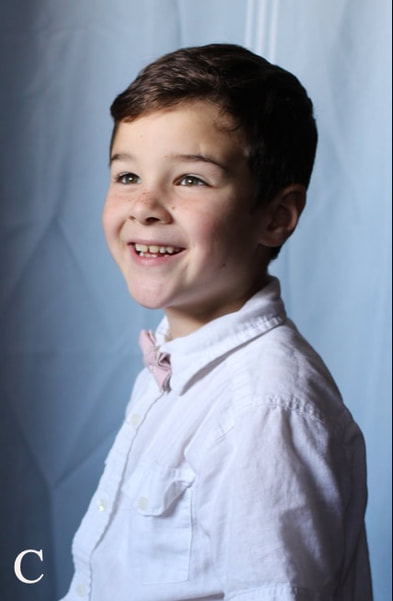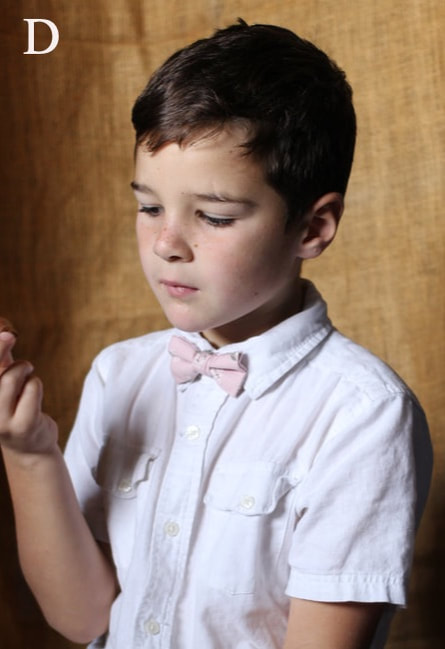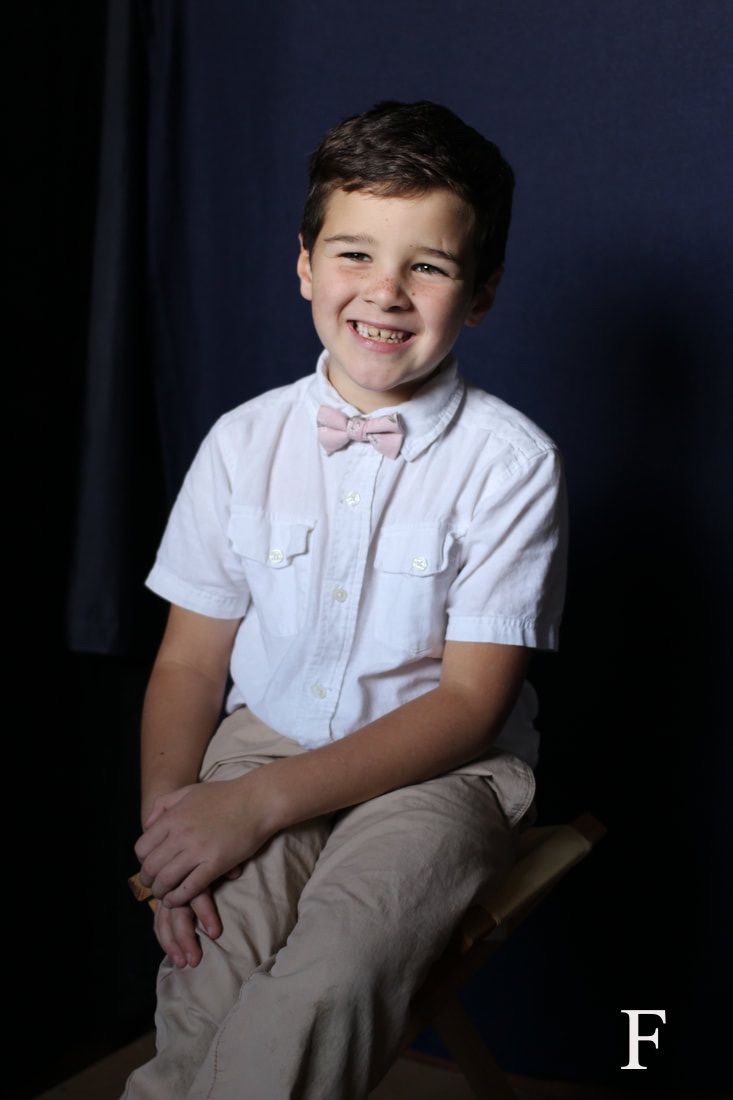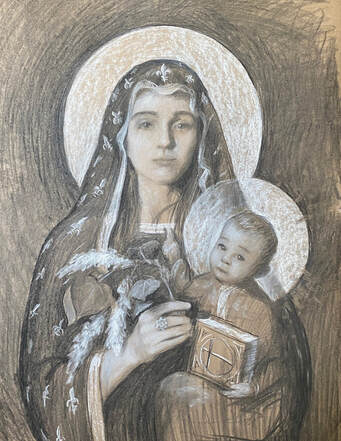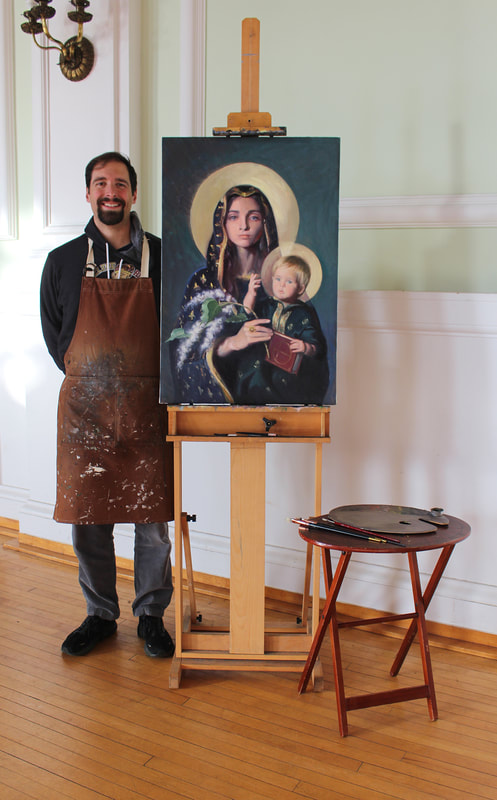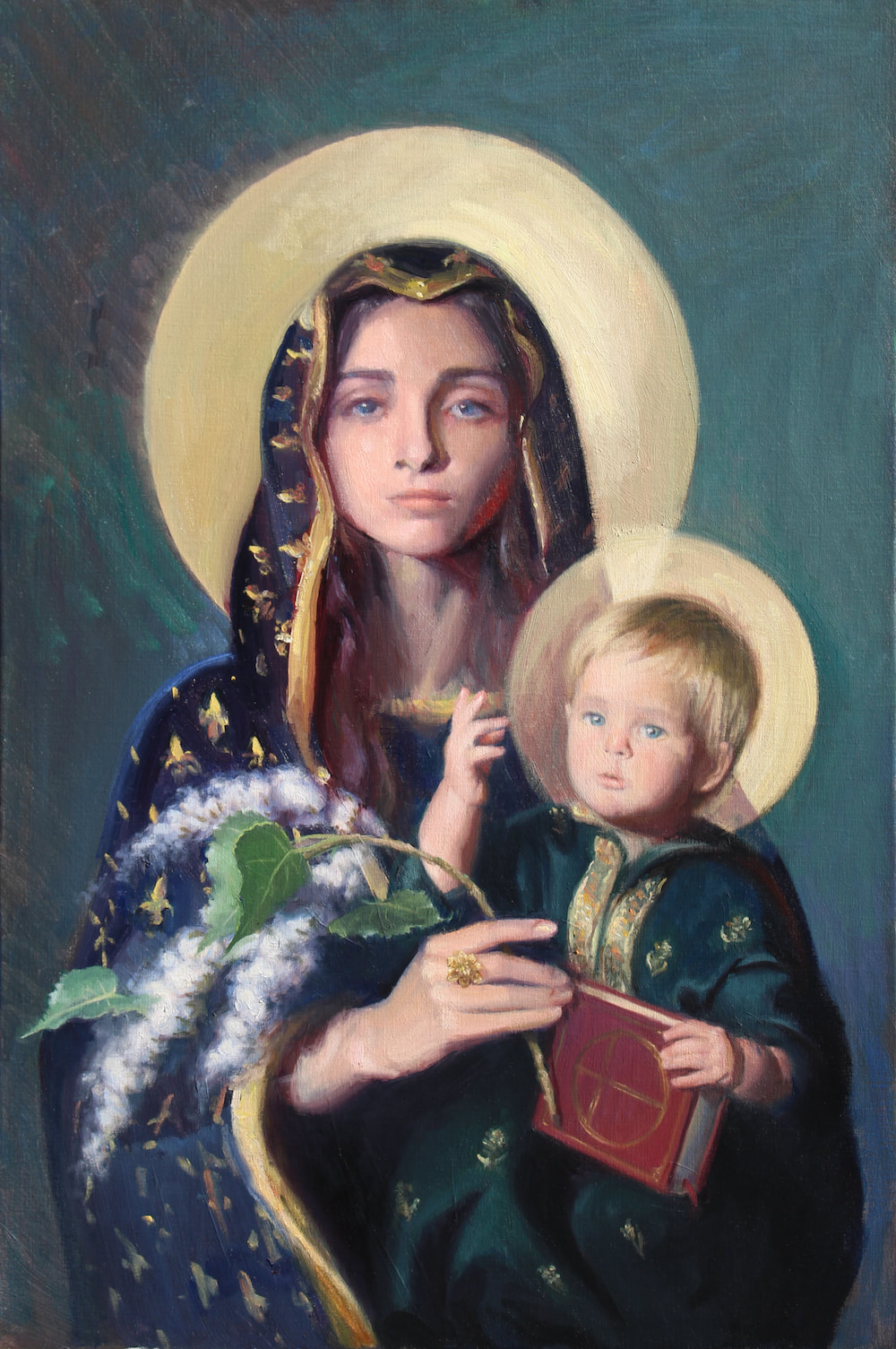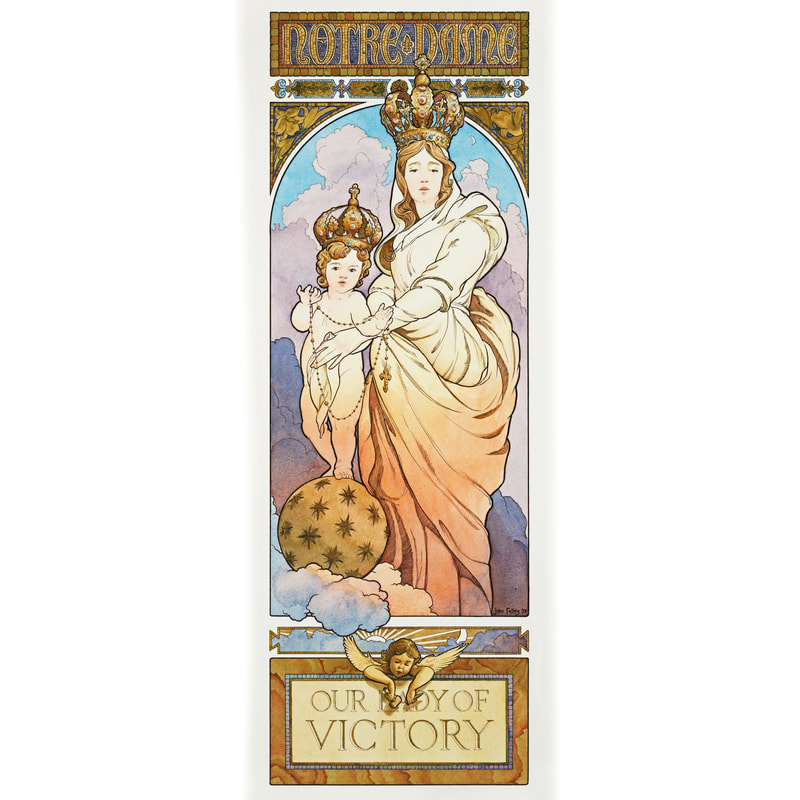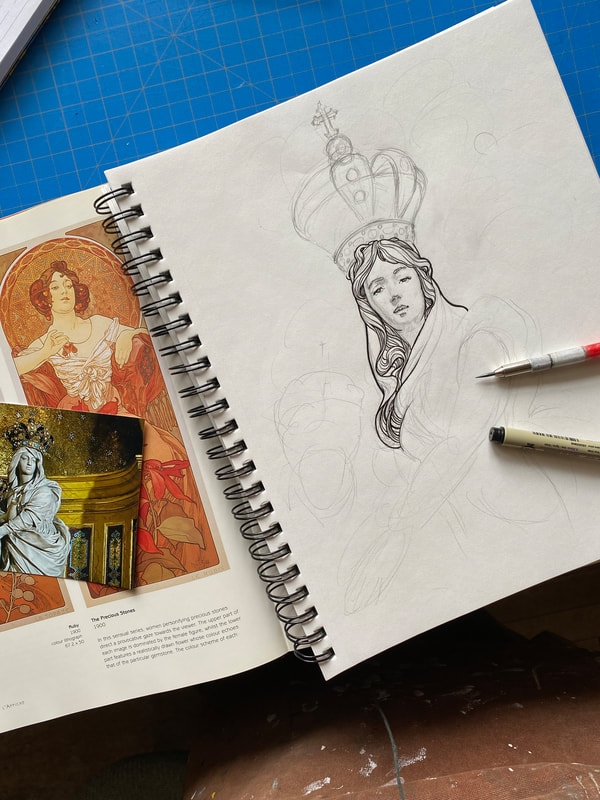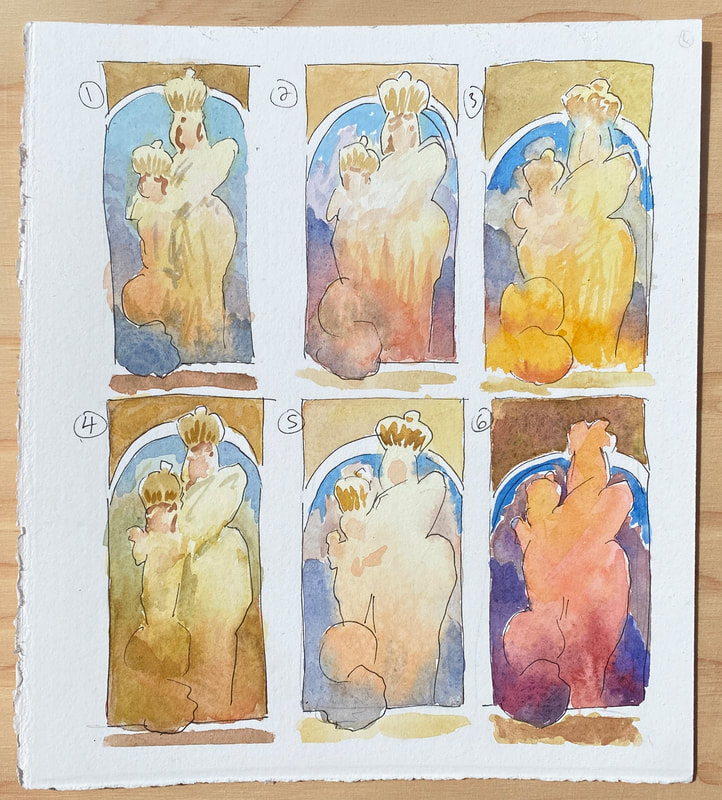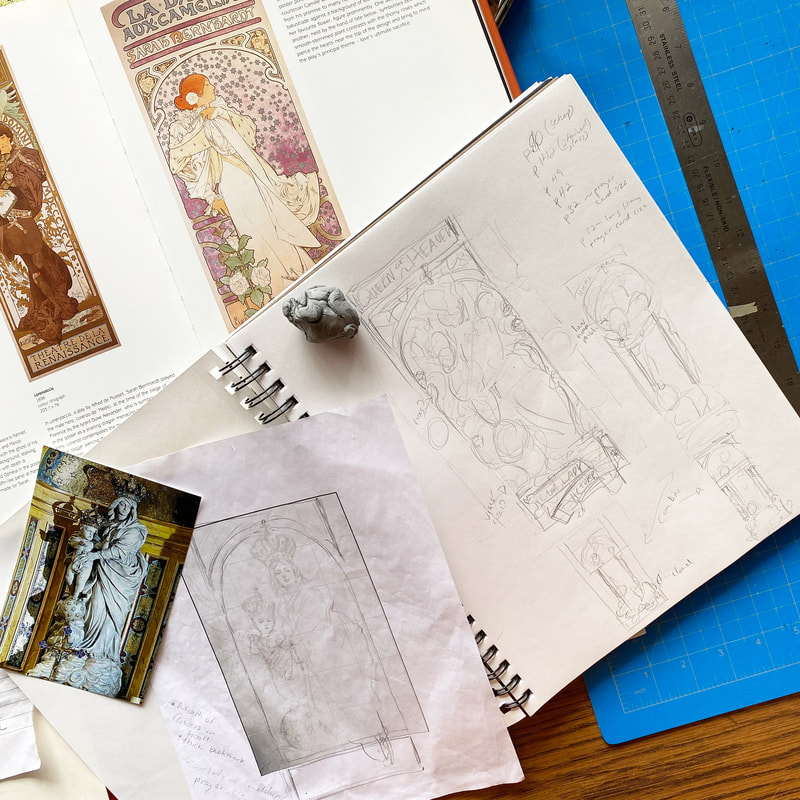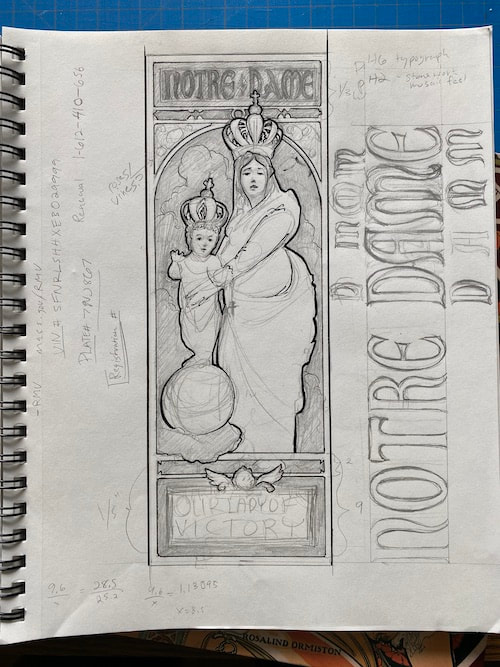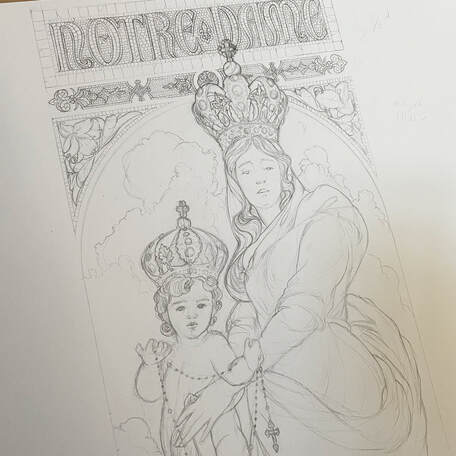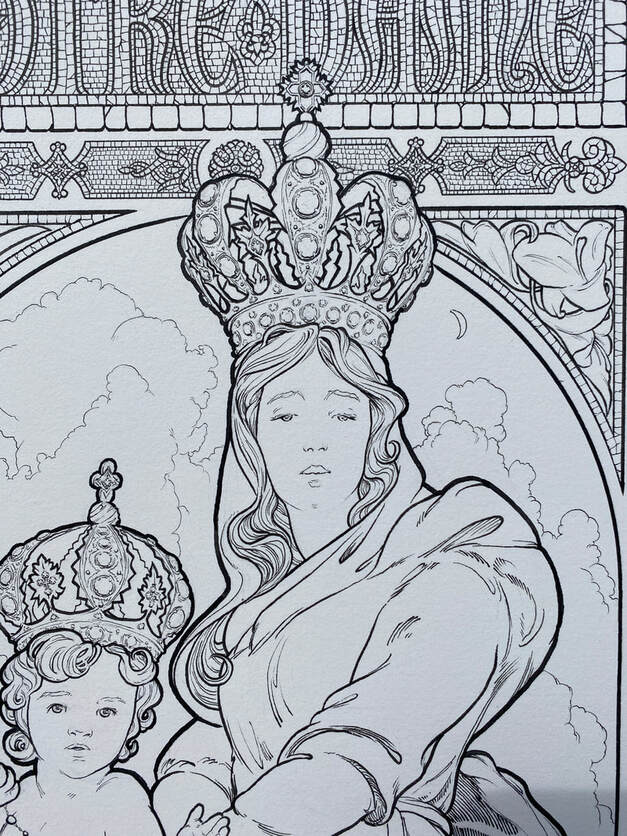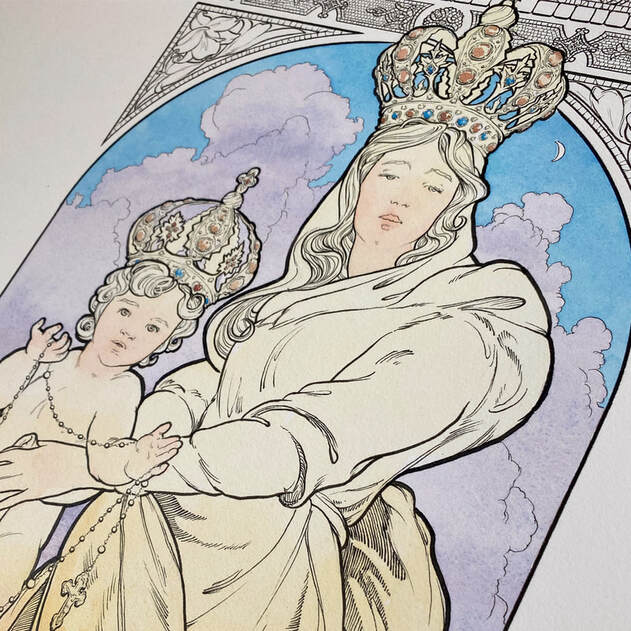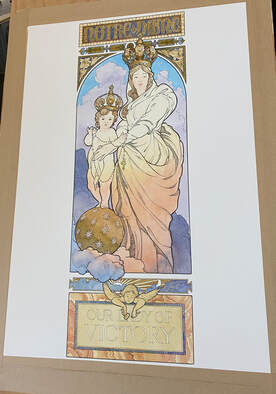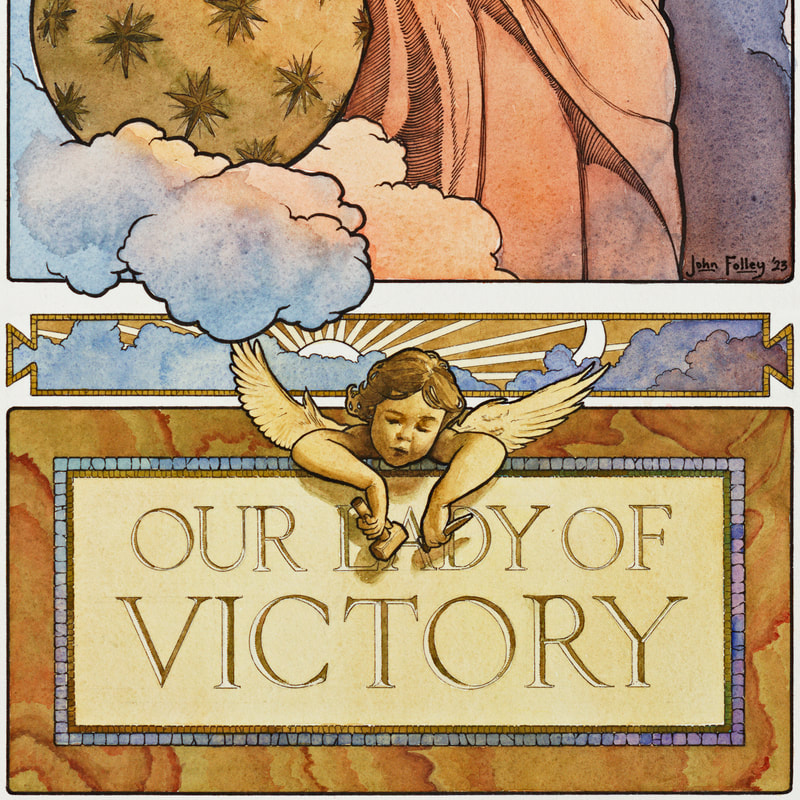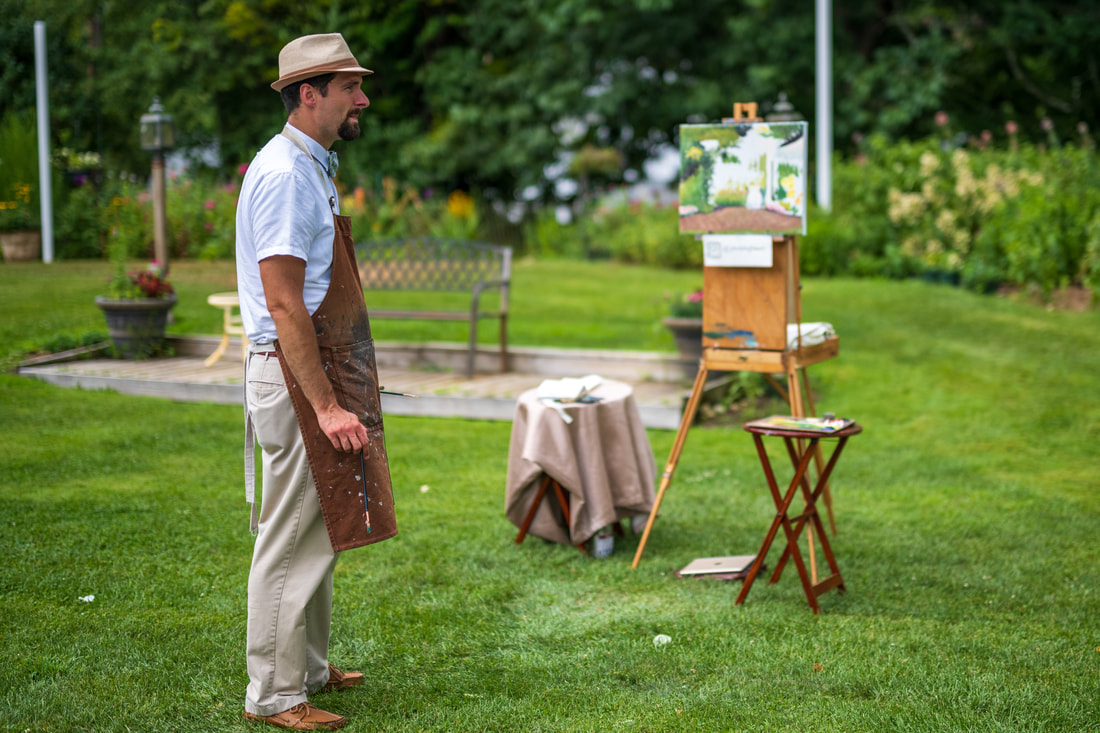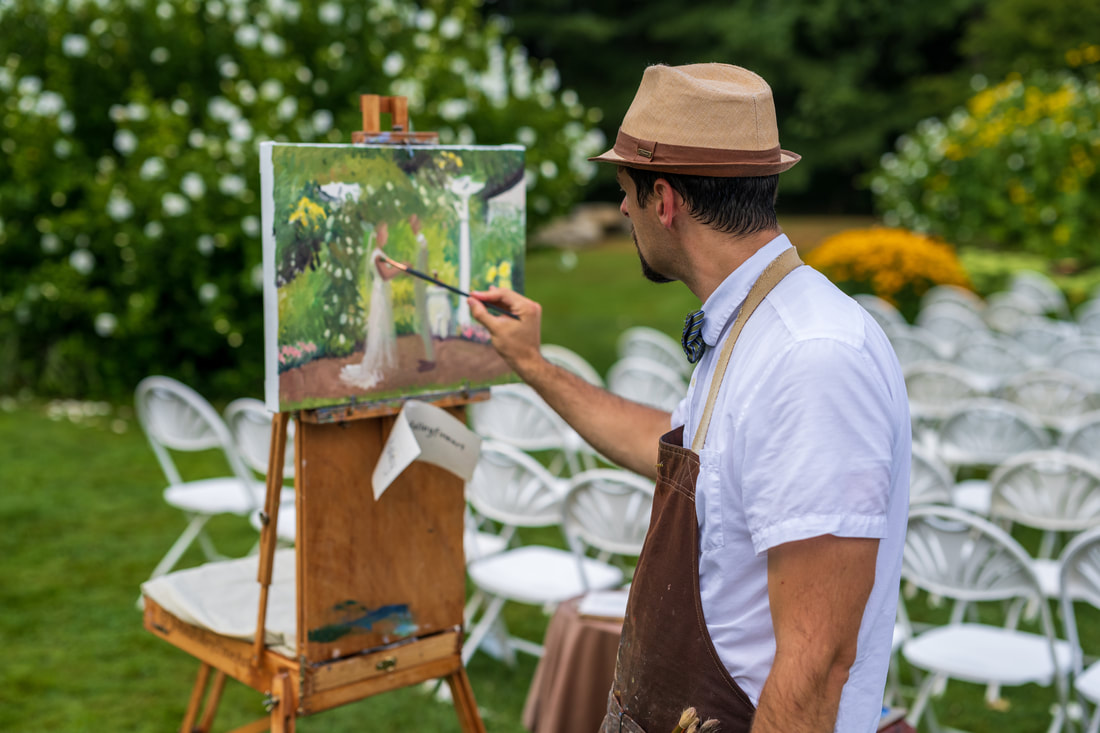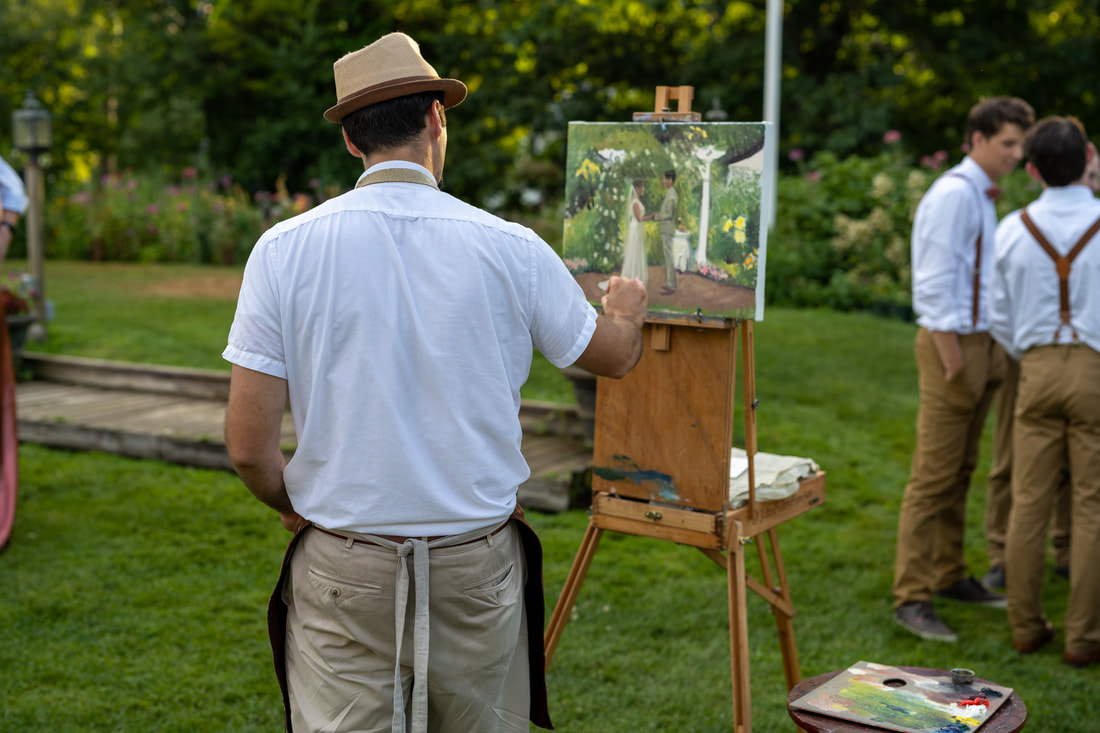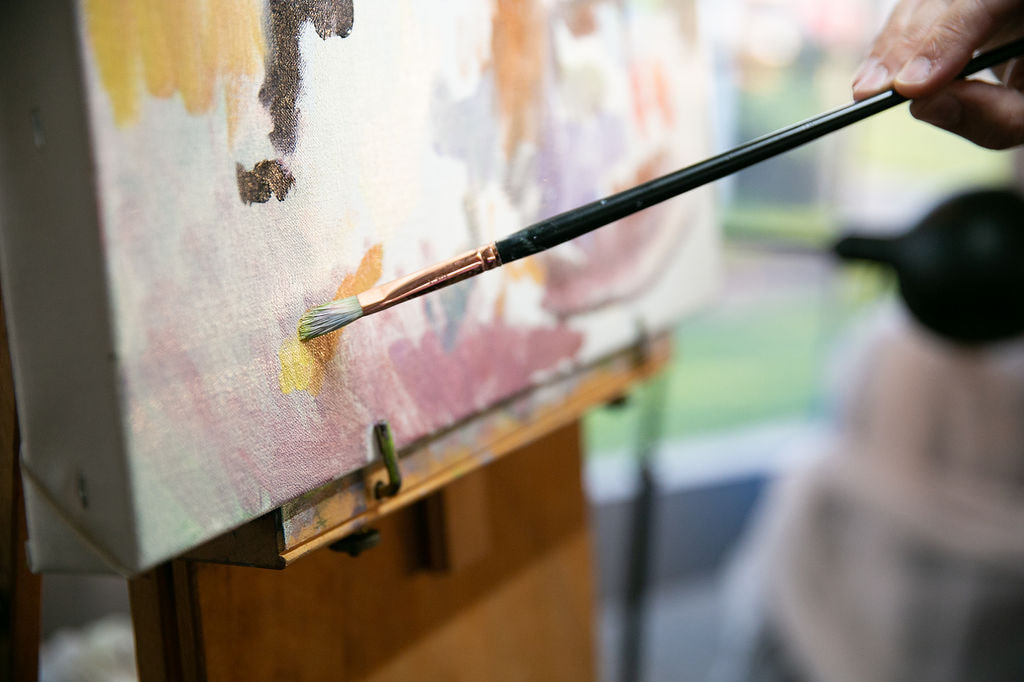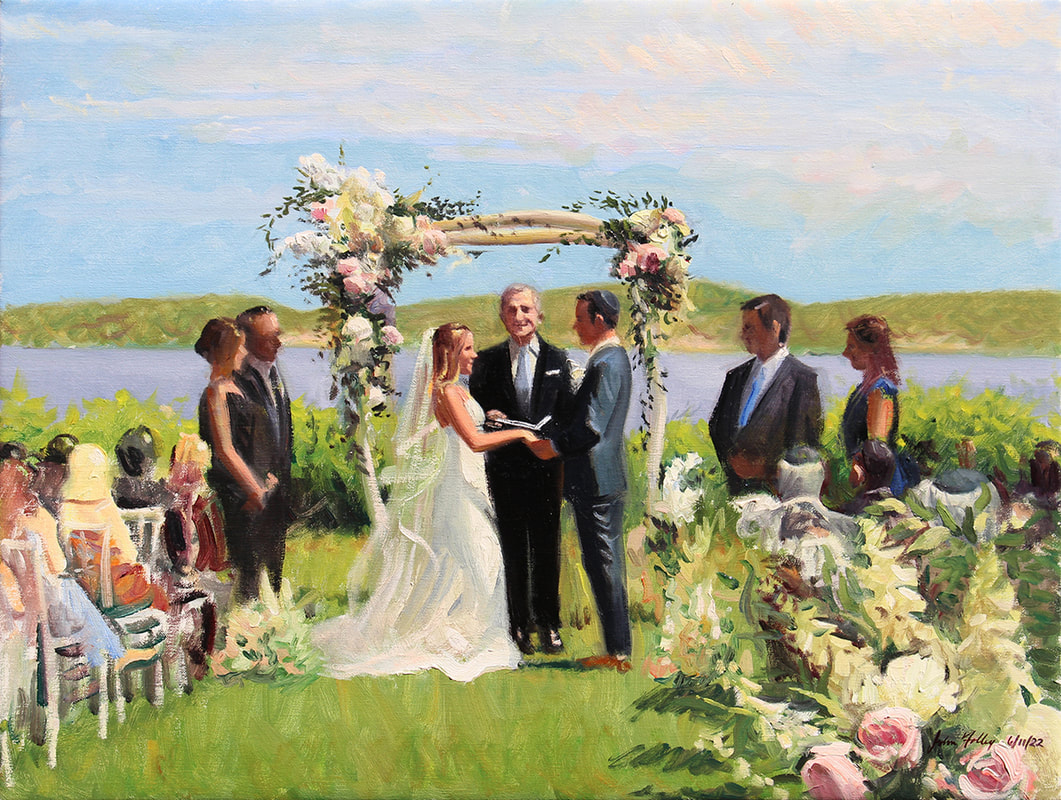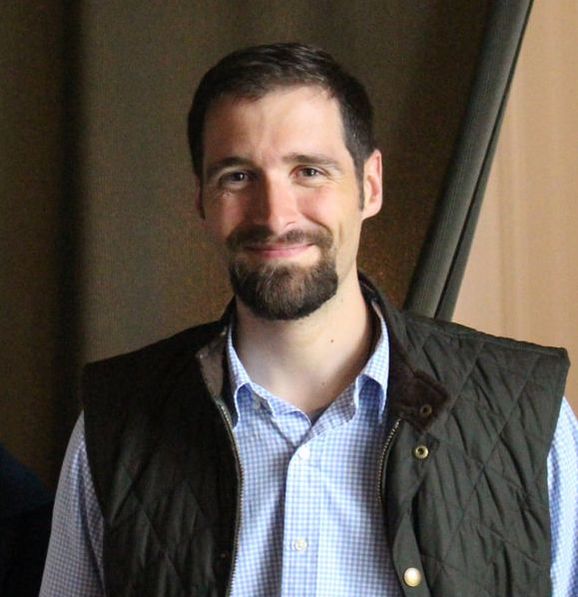It's that time again - time to try to capture one of these cute kiddos on canvas.This time, it's my third child who was in the studio posing for me. In case you're not tracking, my wife Deirdre and I have a sizable little posse now. Our little man here, from the middle of the pack, is one of the most vivacious little guys you could hope to come across. (In fact, it's fair to say that he's a more vivacious little boy than some people can handle.) Having him in the studio was delightful. But it was also a bit of work to get a pose out of the little guy! On top of being lively, t.a.l.k.a.t.i.v.e, and squirmy, he's also one of the most facially expressive people I know. One second the light would be just right and the pose would be almost getting there... and the next second the moment would have passed and he'd be leaving us in his dust. But we got some good shots in spite of him! I'm including a few of the outtakes here to give you a sense of his larger-than-life personality: This is him on very restrained behavior, doing his best to be still and good: I believe he would have provided excellent material for Rockwell. But, as much as I love the comical side, I do want to focus on one of these images that will translate more naturally into a formal oil portrait. So let's talk about some of these options: A. This shot is lovable for the tight energy and high contrasts. I'm a fan of the warm gold going on here, of his hair looking neat and tidy, and of the twinkle in his eye. Beyond that, it's not the best depiction of someone who's generally rough-and-tumble and rowdy as a puppy. B. The color and contrast are good; it's a fun, thoughtful pose. This has an air of 'The dreamer.' C. The abundance of light and color in this is very winning. It's a good amount of focus while also capturing something of the electricity of his smile. I like that we have a good view of his eyes. D. This is a very sweet shot and, again, I love the warmth of this background and the soft tones in the face. It captures the little boy time of his life, but we are losing a great deal with his eyes averted. E. In terms of photography, this is the weakest of the bunch. But we find that the shot captures his smile perhaps most authentically of all the pictures taken. Although the focus isn't the best, I'm considering making use of this image. F. Has many of the good qualities of E with a bit more polish. The jury is still out on this one. Lots to think about here. (Most likely, my final decision will also involve another look at the cropping, as these were quickly cropped for the purposes of this post.)
Tell me: which one or ones is/are your favorite? Comment below -- Maybe you can help me decide what should end up on canvas!
38 Comments
I first heard from the patron behind Our Lady of the Cottonwoods over a year ago. She and her husband had just been looking out their window at their Texas property, a Cottonwood-shaded place which they open up to friends and acquaintances for prayer and Catholic formation, and wishing that they had a beautiful "madonelle" -- such as they had seen throughout the streets of Rome -- present there to inspire. I'm so grateful that they turned to me to help them make this desire come to fruition. The request was for an image that could be placed indoors in a featured position as well as a copy that could be weather-worthy, to go in an outdoor niche as a public witness, a madonelle. Because of a family devotion to Our Lady of Czeschtohowa, I was to look to that famous icon for inspiration, while of course keeping my own style of Boston School Painting. My patrons asked me to imagine Our Lady with dark hair and blue eyes. Discussion back and forth led us to the inclusion of certain details. To adopt Our Lady firmly into the land of the Cottonwoods, we determined that she should hold a blossoming branch of that tree in her hand. This seemed all the more fitting as the branch of the Cottonwood hides a distinct star pattern in its pith; the discreet but beautiful star of this plant calls to mind Mary, the modest Stella Maris. A small team worked behind the scenes to bring the proper elements to my studio for this project: a poised young ballerina served as model across several weeks, her mother looking on; my daughter squirmed through a session in my wife's arms, her fair hair providing the luminous quality for the Christ Child; and a skilled friend was seamstress to provide Mary's regal robe. I did a bit of horticultural hunting and learned that Cottonwoods do indeed grow here in New England. The painting is now complete and the project is now in its final stages. I will have the image professionally reproduced as a giclee to be mounted on wood and weatherproofed for its outdoor shrine; this will be the madonelle. The original oil painting will be framed and hung indoors in the conference room-retreat space where my patrons host events. My goal was to depict the Virgin Mary as a woman who is very young yet steady and calm. Her demeanor is modest although her dress - like the impressive, powdery blossoms of the Cottonwood - is stately. On her hand is a ring featuring the Rose of Pallerols, a symbol with significance for devotees of St. Josemaria, founder of Opus Dei. The Bible in the hand of the Christ Child is also a reference to Opus Dei, as it is adorned by the symbol of that apostolate. As you regard the hands of the figures, you will notice that Christ's hand is gesturing towards Our Lady, while Mary's strong but delicate hand is gently gesturing right back to Him. The bright eyes of each call us in and yet both figures point us towards each other. The most luminous point of the painting is where the halos of the two overlap with one another. It is my sincere hope that this image will be an aid to prayer and a source of inspiration for all the good folks in Texas who see it -- whether they're visiting and enjoying the original painting indoors, or just passing by and seeing it ensconced in its roadside shrine.
Sometimes, an artist produces commissioned works, working with a patron's vision. Sometimes, an artist produces independently, working out his own vision. And sometimes, it seems, something happens that's a beautiful "in between." This new work is one of those pieces. Our Lady of Victory, 25"x9" Ink and Watercolor on paper Let me explain: a version of Our Lady of Victory wrought in a style inspired by the work of Alphonse Mucha. On the one hand, this was a bit of a segue from my main studio work which, as you know, is oil painting in the Boston School tradition. On the other hand, it's a strain of my work that has been growing recently, from my recent Children's books A Child's Christmas ABC Book and A Child's Christmas Counting Book, which were also inspired by Mucha, and just a general pull in the direction of the Beaux Arts master. If you've been watching my Instagram updates and following along with my newsletter, you've noticed this study of mine. A Parisian encounterEleven years ago this month, I rented a tiny apartment in Paris for my honeymoon with Deirdre. It was barely large enough to fit me standing up straight; we affectionately called the spot our 'Hobbit Hole in the Sky.' When we arrived there in the 2nd arrondissement, we found that we were perched just over the little church of Notre-Dame-des-Victoires (Our Lady of Victory). Over the next few weeks of strolling the city streets, visiting museums, painting and drawing together and munching baguettes, arriving back at Notre-Dame-des-Victoires became familiar, and the church was our home base in a foreign place. Like all the churches in Paris, Notre-Dame-des-Victoires is architecturally stunning, imbued with a historic sense of holiness, and packed with painted masterpieces. Perhaps most strikingly, there is, in a side chapel, a large statue of Our Lady of Victory which is surrounded by artistically arranged piles of crutches that were left there by crippled pilgrims -- pilgrims who prayed for Our Lady's intercession and walked away healed, leaving their walking aids behind. It was before this same statue that St. Thérèse, whose sainted parents were devoted to Our Lady of Victory, once famously prayed for discernment about her vocation. We attended daily Mass there several times and became on friendly terms with the priest who was pastor there. At the end of our visit, this kind priest presented us with a small replica of the famous statue of the Victorious Virgin as a gift to take home with us. We were deeply touched by the gesture. We felt a special connection to this little corner of the City of Lights and a new patroness for our future family: Our Lady of Victory. The statue has always held a place of honor in our home. A new take on the MadonnaTwo years ago, I was commissioned by a patron in the Midwest to produce an oil painting of Our Lady of the Rosary (the same iconic image as Our Lady of Victory, under a slightly different title and understanding). It was an occasion to bring my little statue into the studio for study and inspiration. That painting was settled in Indiana some time ago, but the image of Our Lady of Victory/Our Lady of the Rosary has been on my mind and heart... An ink and watercolor, "Art Deco" version needed to be born onto paper. This seemed perhaps to be a bit of a 'pet project,' a pure labor of love... something for me to go ahead and try. But it seems that the goodness of this idea is not just inside my head. As I was sharing the work in progress through Instagram, another patron reached out to inquire about it and ended up purchasing the painting when it was about halfway done. As you can imagine, this was truly a thrill for me! To have my 'concept' adopted at that stage was very affirming and exciting. Since then, not only have I received many more inquiries and positive feedback from many of you about this painting, but I have also had inquiries about further commissions along these lines. So, clearly, my experimental marriage of sacred art with Mucha-style technique has much territory yet to be explored -- and I can't wait to go there. If this is something that you're interested in being a part of, please be in touch to discuss a commission; I would love to have a conversation with you! About the piece itselfYou will notice the symbolism of celestial bodies in the image. Mary is Queen of Heaven and has often been likened to the Moon -- she is not the source of life herself but the perfect mirror of grace, just as the moon reflects the Sun. Here she is imagined as a Lady strong but serene, powerful through her Son but humble in herself. Her mouth is resolute but quiet; the infant Jesus is more poised to speak to us and He offers us the Rosary, that powerful prayer. All the colors of dusk and dawn are around the two figures, but they stand forth in pure light, triumphant. In the corners are stylized lilies which represent Mary's purity. And the various stone touches hearken back to the architecture of Paris. I wanted the crowns especially to stand out with extreme dimensionality and splendor. (Bonus detail: You may notice a similarity between the face of Jesus and the face of the angel who has just carved Our Lady's title into everlasting stone... both are modeled after my little daughter Symphorosa.) I have heard from many of you that Our Lady of Victory is a title that seems very relevant at this historical and cultural moment. Perhaps you are sensing, like me, the spiritual battle taking place around us; perhaps you're occasionally feeling beleaguered and looking to Our Lady as the fair champion we need. We know the gates of Hell will not prevail against Christ's Church. Even when we feel besieged, Mary is a heroine of this story and shares her power through the Holy Rosary. Prints!While my original Our Lady of Victory is awaiting framing in its new home in Texas, I am making prints available for all of you because of the way this image seems to have resonated with so many.
I have worked closely with an excellent giclée print maker here in Massachusetts and am very excited to have him reproducing my work on beautiful, archival, creamy paper with slight texture that is reminiscent of the original watercolor paper. I vetted a few test options and am confident that the quality and color of these prints will be a beautiful and excellent representation of the original work! I'm trying out a print order form for your ease and my organization. Please click through to place your order! Whether you’re a patron I’ve worked for in the past, a friend or family member wondering how this ‘live painting’ thing works, or a bride who is planning on having me take part in your upcoming wedding, I thought you’d enjoy a glimpse of what the big event day is like from my perspective. Without further ado, here is an example of what a day for me looks like when I have a Live Painting gig. Since Saturdays are my most common gig days and most of my Live Painting is for weddings, we’ll imagine this is a Saturday wedding. We’ll imagine it’s taking place at a venue about 1.5 hours away from my home and that I’ve been asked to paint the ceremony. The Day Before [at the studio]: I pack up my palette and brushes and load them into my car along with a fresh canvas, my easel, and other materials that I’ll need on-site. The Day Of 6-8:00am [at home]: Rise and go on a run. Get some tea and breakfast with my family. 8:30am-11: I hang out with the kids, do some yard work or other at-home chores, or maybe run an errand. Or I might stay home and keep an eye on everyone while Deirdre does the grocery shopping for the week or gets some other errand of her own done. 11:30: I clean up and get dressed, review any details about travel, arrival instruction, etc. 12:00: I have lunch with my family. Deirdre packs me some snacks and plenty of water - maybe some iced tea - for the road. (I get hungry on these days: she knows I appreciate portable, high-protein snacks… and something for my sweet tooth.) 12:30: I say goodbye to the family and depart for the event. I might listen to a podcast on the way (lately I’ve been enjoying a lot of history learning on my commutes and long drives). 2:00pm: [on location] I arrive at the wedding venue, connect with my point of contact (maybe it’s the wedding planner or a venue coordinator) and locate the best spot for my easel. Unpack and get set up. 2:30pm: I start painting the background of the scene. At this point, I relax and settle into the process. I might meet the other vendors for the day and have a chat with the photographer and maybe a family member of the bride or groom. 4:30pm: As guests file into the space and take their seats, I concentrate a bit more on how the light is landing and get ready to bring the painting to the next level of detail. I also field a few questions as folks notice my artwork, wonder what I’m up to, and want to learn more. 5:00pm: The bride walks down the aisle and the ceremony starts. Now I am doing a lot of observation, making mental notes on all the details, and looking for just the right moment. I take out my camera and get some good photos for reference. I start to paint the couple in. 5:30-6:30pm: As the cocktail hour takes place, I get back into the zone, working on the painting. The key moment has passed and everyone is dispersing, but now I’m leaning on my memory and on my reference photos to keep honing in on the image. Lots of questions and answers with guests around now. 7pm: The reception gets into full swing. The couple might come around and take a look, and I always look forward to getting their reaction and hearing their feedback. Guests might come to see how the painting looks, compared to their first glance at 4:45, or they might just start to notice me and enjoy the ‘instant replay’ from the ceremony. 7:30pm: I take a break from painting to have dinner, either perched in a quiet spot or sitting with the other vendors. 8pm: After a break, I have a fresh look at the painting. By now, my work is mostly done and I know I’ll add final touches in the studio. But I might hang around for a bit to soak in the scene, answer questions from wedding attendees, and add some more strokes while the image is fresh in my mind. If the crowd is very engaged with my work, I’ll stick around longer; if everyone has moved on to the dancefloor or elsewhere, I’ll pack up. 10:00pm: My car is all packed and my work is done; I dip into my snack bag for a little pick-me-up and then hit the road. 11pm: I arrive back at my studio. I clean my brushes and palette for the night. I store the painting safely where it can begin the drying process. 12:00am: I hit the hay back at home. The following Monday I follow up with any post-event communication that needs to happen. Back in the studio, I take a fresh look at the painting. In the coming days, I add a few final touches - usually to the faces and figures of the bride and groom. I paint the sides of the canvas (it doesn't usually work logistically to do this step before now). I let it dry. Sometime the following week I varnish the painting. Two weeks later I give the painting a second coat of varnish. Three weeks later By now the painting should be totally dry and ready to ship. I photograph the painting for my portfolio and also so that I can produce any prints and/or cards that have been requested. Depending on my workflow and how many other paintings also need to head to their final destinations, I’ll pack it up or I’ll let it set a little longer. By one to three months later The painting arrives to the newlyweds and I check in to make sure all is well. Even though this is a week-in, week-out routine through the season, I am always anxious to hear a pleased word in response, and always thrilled when I do. And voila! Did I miss anything that you’ve wondered about? Thanks for reading!
For more about Live Painting, click here. |
AuthorHello there, I'm John H. Folley, an oil painter in the Boston School tradition. Thanks for visiting the Beauty Advocacy Blog, where it's my job to help you become a more discerning art appreciator. Connect with John:
Categories
All
Archives
February 2024
|
